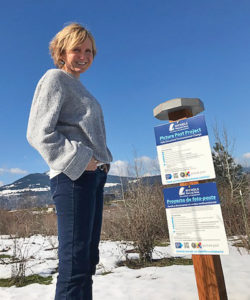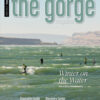I’ve lived in Hood River long enough to remember when Nichols Boat Works was still turning out vessels from its cavernous metal building at the head of Nichols Basin. In those days, the basin looked different than it does now. The dock, which today is home to the seasonal Sandbar Café, served as an actual dock for passenger boats — including the various sternwheelers plying the Columbia. That, of course, was before the flood of November 2006, when a warm, wet storm caused an ice dam on Mount Hood’s Eliot Glacier to collapse, sending a torrent of water, mud and debris down the Hood River. When it was over, an estimated 1.5 million cubic yards of sand had been deposited at the mouth of the Hood River. The formerly spindly spit had grown by 26 acres, nearly blocking off Nichols Basin from the Columbia.
In the years since the flood, the Hood River waterfront has been transformed. Development has morphed it into a thriving hub of businesses, restaurants, breweries and a hotel. It’s the nerve center of recreation in Hood River, and is a destination unto itself. But the site of the former boat works, at the south end of Nichols Basin, is being transformed in another way. A three-acre parcel abutting the basin is protected in perpetuity through a conservation easement, owned by the city and managed by Columbia Riverkeeper. The river advocacy organization has involved the community — and students from around the Gorge — in creating an undeveloped park at the site, known as Nichols Natural Area. Last year, nearly 800 students explored the site as a living laboratory, learning about riparian habitat, testing water quality and inventorying bugs. Students and other community members have planted trees and continue to transform the area from a former industrial site to a healthy, green space. Riverkeeper works to engage diverse communities in the project, so we can all feel a sense of pride and connectedness to it. We take a look at the history of Nichols Basin, and the creation of Nichols Natural Area, beginning on page 66.
Spring brings with it one of the most-anticipated events of the season, the Gorge Artists Open Studios Tour (page 68). This year’s tour is the largest to date, with 48 artists from around the Gorge inviting visitors into their studios for an intimate look at where they work. This year’s tour includes 10 new artists participating for the first time.
This issue is filled with other interesting stories. David Hanson takes a look at hemp, newly legalized across the U.S., and some local entrepreneurs who are making products from the plant’s seeds. Ruth Berkowitz introduces us to Amy Roots, who makes a beeswax-coated wrap for food storage to help us all reduce our use of plastic. And Gregg Herrington takes us on a geology-focused trip through the Gorge, giving us the origin stories of this stunning place and many of its iconic features. Happy reading, and here’s to springtime in the Gorge. Enjoy!
—Janet Cook, Editor








